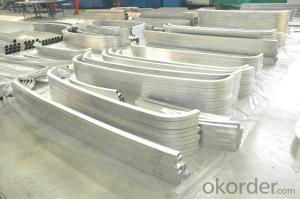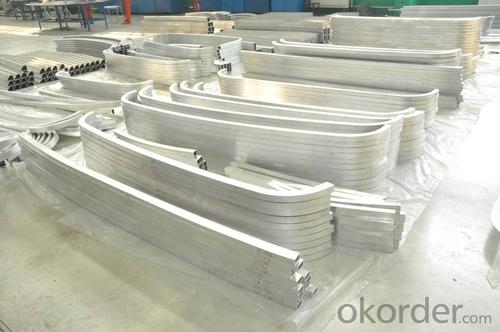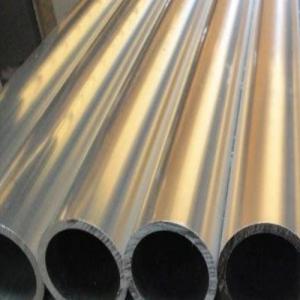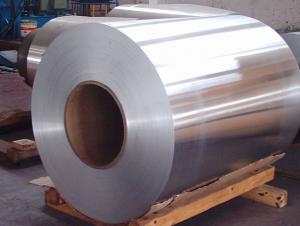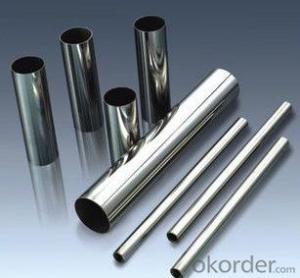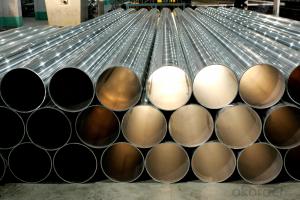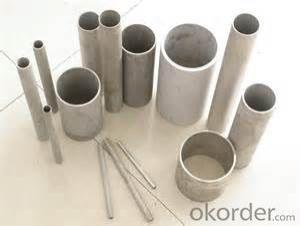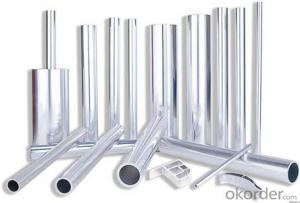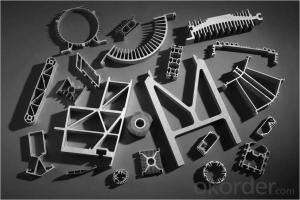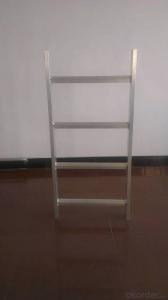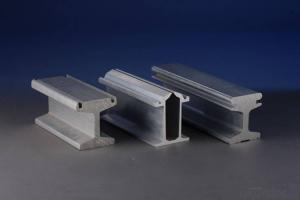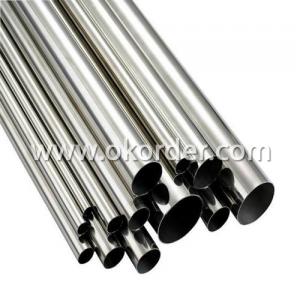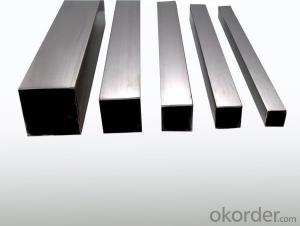Aluminum Beam and Pipes
OKorder Service Pledge
OKorder Financial Service
You Might Also Like
We are the largest aluminum profilemanufacture in
Material | Alloy Aluminum 6063,6061,6005,6082 or customer nominated |
Temper | T3, T4, T5, T6 and other |
Surface | Anodize, electrophoresis, Mill,etc |
Colour | -- |
Length | Not more than 16 meters |
Good Package | Inner plastic film /outside carton/wooden pallets |
Payment Method | T/T, L/C, etc |
Delivery Time | Normally 2-4 weeks, Delivery time can be consulted. |
Press Machine | 500-12500 tons all together 93 press lines. |
Fabrication | 1. Car body; 2. Drilling; 3. Bending; 4. Cutting; 5. etc. |
Certificate | ISO/TS 16949,DNV,IRIS,CCS,AFA,etc. |
Dies | 1. Using our dies, no fee; |
2. Using customer drawing, opening dies, usually about 5~50 tons then the dies cost can be refunded. | |
3. Die cost is negotiable base on the order quantity | |
Capability | Annual output 800,000 tons |
- Q: What are the different pressure testing standards for aluminum pipes?
- There are several pressure testing standards that are commonly used for aluminum pipes. Some of the most widely recognized standards include: 1. ASTM B-241: This standard is specific to aluminum-alloy seamless pipe and is used to determine the pressure capabilities of the pipe under various conditions. It provides guidelines for testing the pipe's strength, thickness, and ability to withstand internal and external pressures. 2. ASME B31.3: This standard is part of the American Society of Mechanical Engineers (ASME) code for process piping. It provides requirements and guidelines for the design, fabrication, inspection, and testing of aluminum pipes used in various industries. It includes specific pressure testing procedures and acceptance criteria for aluminum pipes. 3. ISO 6892: This standard is an international standard that outlines the testing methods for metallic materials, including aluminum. It includes procedures for determining the mechanical properties of aluminum pipes, including tensile strength, yield strength, and elongation. While not specifically focused on pressure testing, it provides valuable information on the overall strength and performance of aluminum pipes. 4. MIL-PRF-6855: This military standard specifies the requirements for rubber and polyurethane hoses used in aircraft fuel systems. While not exclusively for aluminum pipes, it includes pressure testing standards and criteria that are applicable to aluminum pipes used in aviation applications. It is important to note that these are just a few of the commonly used pressure testing standards for aluminum pipes. Depending on the specific application and industry, there may be additional standards or guidelines that need to be followed. It is always recommended to consult the relevant industry standards and codes to ensure compliance with specific pressure testing requirements.
- Q: Can aluminum pipes be used for hydraulic systems?
- Yes, aluminum pipes can be used for hydraulic systems. Aluminum is a lightweight and corrosion-resistant material, making it a suitable choice for various applications, including hydraulic systems. Aluminum pipes offer advantages such as easy installation, high strength-to-weight ratio, and excellent resistance to rust and corrosion. However, it is important to consider the operating pressure and temperature requirements of the hydraulic system, as aluminum pipes may have limitations in high-pressure or high-temperature applications compared to other materials like steel. Therefore, it is recommended to consult with a hydraulic system specialist or engineer to determine the most appropriate material for your specific hydraulic system requirements.
- Q: Which pressure is high between titanium tube and aluminium tube?
- It depends on how to compare, pure titanium tube or titanium alloy tube? Pure aluminum tube or aluminium alloy tube? Titanium alloys and aluminium alloys are divided into many grades.
- Q: How can the refrigerator aluminum pipe leak?
- 1, the welding of aluminum pipe is more troublesome, and generally replace the new evaporator. Although there is a leak freezer tube can be welded, but not the good point, near the emergence of a new leak, it was suggested to change the new evaporator.
- Q: What's the material of aluminium pipe 6063?
- As for the chemical composition, according to the national standards are: silicon 0.2-0.6%; iron 0.35%; copper 0.1%; manganese 0.1%; magnesium 0.45-0.9%; chromium 0.1%; zinc 0.1%; titanium 0.1%; the remaining aluminum.
- Q: What's the good quality of the aluminum tubes used for air conditioning?
- 1. pure copper has excellent ductilityAir conditioning has a tube expanding process in the manufacturing process, is put through the fin copper pipe burst, let bobbin and fin precision contact tube expanding technology is the key performance of heat exchanger of air conditioning, the ductility of copper to ensure good not easy in this process is broken.2. copper has an unparalleled corrosion resistanceCopper is much more resistant to corrosion than aluminum in the outdoor hostile environment. Statue of Liberty has been thinned since 1886 for more than 120 years, and that is proof of 0.127mm.4. in the joint place with copper and aluminum composite, two kinds of metal binding sites are likely to occur electrochemical corrosion potential of copper is +0.34V standard, standard potential of aluminum -1.28V, the potential difference between copper and aluminum is +1.62V. If direct contact between copper and aluminum, water in the air and carbon monoxide and other harmful impurities will form electrolyte on the contact surface of the joint, causing electrochemical corrosion, which is called galvanic cell.
- Q: Why is copper pipe used instead of copper aluminum composite tube or aluminium pipe?
- Pipe is widely used. Pipes are used in many industries.Different industries have different characteristics of the industry, and thus have different technical requirements.Pipe is a relatively mature product, each industry has the corresponding technical standards.Detect pipe material, according to the application of pipe industry, select the corresponding product standards, according to the industry needs to detect the corresponding technical indicators.
- Q: Can aluminum pipes be used for irrigation sprinkler systems?
- Yes, aluminum pipes can be used for irrigation sprinkler systems. Aluminum pipes are lightweight, durable, and resistant to corrosion, which makes them a suitable choice for irrigation systems. They are also easy to install and can withstand high-pressure water flow. Additionally, aluminum pipes have a longer lifespan compared to other materials, such as PVC or galvanized steel, which makes them a cost-effective option for irrigation systems. However, it is important to consider the specific requirements of the irrigation system and consult with a professional to ensure that aluminum pipes are the best choice for your specific needs.
- Q: Do aluminum pipes expand or contract with temperature changes?
- Aluminum pipes expand with temperature increases and contract with temperature decreases. This is due to the property of thermal expansion, which is the tendency of a material to change in size, volume, or shape in response to temperature changes. As aluminum is heated, the atoms within the metal gain energy and vibrate more, causing the material to expand. Conversely, when the temperature decreases, the atoms lose energy and vibrate less, resulting in contraction. It is important to consider these thermal expansion and contraction effects when designing and installing aluminum pipes to ensure proper fit and functionality.
- Q: Are aluminum pipes suitable for nuclear power plants?
- Yes, aluminum pipes are not suitable for use in nuclear power plants. While aluminum is a lightweight and corrosion-resistant material, it has certain limitations that make it unsuitable for applications in nuclear power plants. One of the main concerns with using aluminum pipes in nuclear power plants is its relatively low melting point. Aluminum has a melting point of about 660 degrees Celsius, which is significantly lower than the operating temperatures experienced in nuclear power plants. The high temperatures in nuclear power plants can exceed the melting point of aluminum, leading to deformation or failure of the pipes, which can compromise the integrity of the system. Another significant concern is aluminum's low neutron absorption cross-section. Neutrons are an important component in nuclear reactions, and materials used in nuclear power plants need to have the ability to absorb these neutrons to control the reaction and prevent a runaway chain reaction. Aluminum has a relatively low neutron absorption rate, which makes it unsuitable for use in critical areas where neutron absorption is required. Additionally, aluminum is susceptible to corrosion in certain conditions, particularly in the presence of water or moisture. Nuclear power plants use water as a coolant and for various other purposes, and the corrosive environment can lead to the degradation of aluminum pipes over time. Corrosion can compromise the structural integrity of the pipes, leading to leaks or failures, which can have severe consequences in a nuclear power plant. Considering these factors, materials that are commonly used in nuclear power plants, such as stainless steel or other high-performance alloys, are preferred over aluminum due to their higher melting points, better neutron absorption properties, and superior resistance to corrosion. In conclusion, aluminum pipes are not suitable for use in nuclear power plants due to their low melting point, poor neutron absorption properties, and susceptibility to corrosion. Other materials, such as stainless steel, are preferred for their higher temperature resistance, better neutron absorption rates, and superior corrosion resistance, ensuring the safety and reliability of nuclear power plant operations.
Send your message to us
Aluminum Beam and Pipes
OKorder Service Pledge
OKorder Financial Service
Similar products
Hot products
Hot Searches
Related keywords
